
Cutting a large piece of meat into smaller portions can not only turn a relatively small expenditure into big savings, but it can also add great flexibility to your menu-planning. For example, knowing simple home-butchering skills lets you turn a bargain pork loin roast into more expensive chops. Smaller cuts take less cooking time, spare you the nuisance of leftovers and may be more suitable for the style of your family or company meals.
Pork Geography
"Loin" is the word used to describe the strip of meat and rib bones lying on both sides of the spine that run from shoulder to hip on a pig, cow or other meat animal. The loin of a pig is the source of fatback, bacon, spare ribs, loin roast, chops and steaks. Butchers make different choices about portioning out this meaty section, depending on local market preferences. In some regions, for example, butchers section a loin into a roast, chops and thick steaks. In another, steaks may be sliced into boneless cutlets or strips thin enough for stir-frying. Roasts can be boneless or with bones or bone-in, and the amount of meat left on spare ribs is a reflection of local customer tastes. An entire loin can be cut into five kinds of chops, often, but not always, labelled "sirloin," "loin," "center cut," "rib" and "rib end."
Starting With a Loin Rib Roast
With a loin rib roast, the number of bones determines the number of chops you can cut, and 5- or 7-bone cuts are common. Full 9-rib cuts are often trimmed and tied into crown roasts, especially around the holidays. At the meaty end of the ribs, you will notice a ridge of bone, called the "chine," which connects the ribs to the spine. Butchers sometimes nick the chine between each pair of ribs to make carving the roast easier. If the bone is not nicked, ask your butcher to pare down the chine with a single cut of the band saw. At home, transform the roast into chops by cutting between the rib bones and pressing or tapping the knife through the chine.
Starting With a Full Loin Roast
A strip of bone runs the length of a full loin roast, separating the main loin from the tenderloin. A similar strip of bone runs through a beef loin, which is why a center-cut pork chop looks much like a porterhouse steak, with segments of main loin and tenderloin on each side of the bone. Clean cuts are best made with a band saw. To make chops at home, running the tip of a knife along the bone and tugging gently will free both the main loin and the tenderloin in single pieces. You can then cut boneless loin chops and make tenderloin medallions or reserve the tenderloin in a whole piece for another meal. This approach can be particularly useful if you want extra-thick or extra-thin chops.
Chop Shop Tools
A few good tools can make the difference between good home butchering and kitchen carnage. A large, thick hardwood cutting board lets you wield a knife with strength when necessary and is easy to scrub completely clean. A good-quality large chef's knife and a thin-bladed boning knife minimize ragged edges on your cuts. A small rubber mallet is optional but allows you to tap your knife, rather than saw, through gristle or small bones. What is not optional is a good knife sharpener. Keeping your knives in good condition, free from minor blade nicks and smoothly sharp, is the best way to make home butchering easy and attractive.
Related Articles
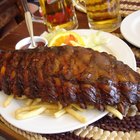
How to Buy the Best Spare Ribs at the ...
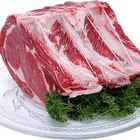
How to Debone a Ribeye
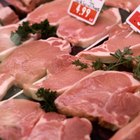
Types of Pork Chops

How to Cook a Restaurant-Quality Prime ...

How to Cook Boneless Country Spare Ribs

How to Turn a Chuck Roast Into Steak

Secrets to Tender Breaded Pork Chops

What Cuts of Meat Can I Get From Deer ...
How to Cook a Spencer Roast

How to Carve a Bottom Round Roast Into ...
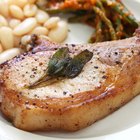
How to Grill Iowa Chops
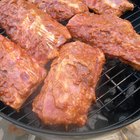
How to Cut Country Style Pork Ribs
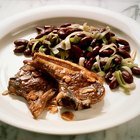
Cooking Instructions for Lamb Chops

The Proper Way to Eat Lamb Chops

How to Cook Spare Ribs in a Rotisserie
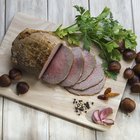
How to Cook a Tender Eye Roast

How to Cook Thin Cut Butterfly Pork
How to Cook a Rolled Roast Medium Rare
What Cuts of Beef Come From a Hind?

How to Carve a Bone-In Ribeye
References
Resources
Writer Bio
Janet Beal has written for various websites, covering a variety of topics, including gardening, home, child development and cultural issues. Her work has appeared on early childhood education and consumer education websites. She has a Bachelor of Arts in English from Harvard University and a Master of Science in early childhood education from the College of New Rochelle.
Photo Credits
Jupiterimages/Photos.com/Getty Images